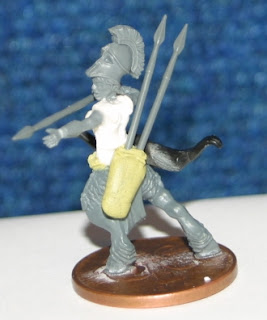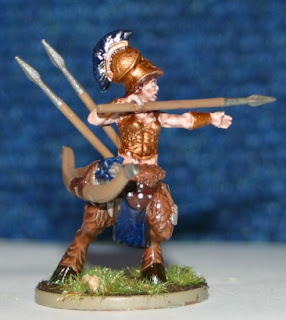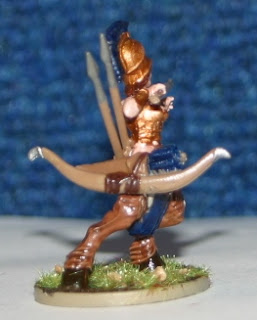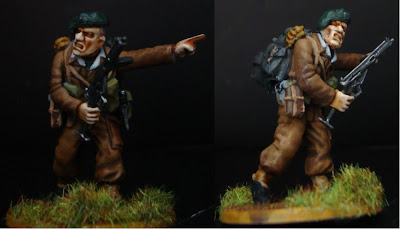Somewhat over a year ago I discovered a really interesting post apocalypse RPG called
Atomic Highway. I can't remember exactly how I came across it but I know that I first used to to run a modern day cops scenario for some new role players which went really well. It's a very simple, rules light system that I thoroughly recommend you check out. It's also
free in PDF form. :-)
Anyhow, although I love the system in it's entirety there's one part that I've ported over to other RPGs, especially Pathfinder, because it's such a good mechanic. It's called Fortune Points and there are similarities with bennies in Savage Worlds, fate points in WFRP and, of course, Hero Points in Pathfinder. I always felt that Hero Points were a bit fiddly and limited so I never actually used them. Anyhow, whilst it's not an original mechanic
per se it's the best implementation of it that I've personally come across. I shan't outline the original mechanics here; Atomic Highway is well worth a read if you're interested in the original, instead I'm just going to talk about how I converted them to use in Pathfinder.
Fortune Points in Pathfinder RPG
I start with about 20 Fortune Points (FPs) divided amongst all the players, so depending on how many people there are, players get between three and five each. I sometimes give out extra ones during play if someone does something particularly cool or funny but usually just two or three over a four hour session. I always have physical counters that people can pick up and pass around, somehow it's just better than making them another number on the character sheet.
If you want to just test out the mechanic in your game you might try giving one to each player to start with.
Using Fortune Points
You can use Fortune Points in the following ways:
- You can spend one FP to change one d20 roll to a natural 20. You can't score critical hits from doing this but that's the only limit. You can use one to confirm a critical. You can only affect d20 rolls so damage cannot be affect.
- You can spend two FPs to create a plot tweak, a small change in the plot that you want to see happen.
- You can spend more plot points, typically five, to create a plot twist which is a more major change in the plot.
- Players may spend points on other players if they wish. They may also club together to buy plot twists and tweaks.
How this changes the game... in my experience.
Naturally this mechanic creates a few changes in the game dynamics but my group has found them really positive. The other members of the group who GM use them as well now. Your mileage may vary of course. Below I talk about the changes I've seen in about 15 months of using them in weekly games as both a player and a GM. In general, being able to buy a roll of 20 when you really want one speeds up combat and mitigates the bad dice rolls that afflict some players. Buying plot twists and tweaks allow the player to influence the story more.
Buying a 20
Player: "Darn, I missed and I'm sure I just need one more hit to bring him down. Okay, I'll spend a Fortune Point...
Fights go quicker because players spend FPs at important moments to get a hit or confirm a critical.
Player: "I leap across the chasm... Darn, I rolled a one. I'll spend a Fortune Point. Sooo, I leap across the chasm..."
I think you also get a bit more of a cinematic feel because dramatic moments are less likely to be killed by bad dice rolls.
GM: "The dragon sends ball of fire towards you. Make a Reflex save."
Player:
Rolls dice. "Agh! Okay, I'll spend my last Fortune Point that's half damage. I'm still alive - barely."
Fortune points also help out with failed saves making the characters better able to deal with spellcasters and other creatures out of their league... at least for a while. I like this because it means I can put the party up against enemies which are mechanically too tough for them but should logically be be present in a given situation. You see the heroes get out of deadly situations by the power of fate, just like in a film or a book. Players seem to enjoy that because it makes it easier for them to do cool things. And that's a big part of why we play.
But - and here's an important point folks; yes, Fortune Points give the PCs a bit more power but they don't make them invincible. If you're running a game with a lot of deaths this will slow it down but won't stop it.
Tweaking and twisting the plot
So much for buying the rolls you want. What about these plot twists and tweaks I hear you ask? Isn't that asking for trouble? Won't the players derail my game? Speaking as a low prep GM who does a lot of improvisation anyway, no. Personally, I take the view that a large part of GMing is thinking on your feet anyway. If you are someone who prepares in detail and finds it tough to improvise, then this might not be so good for you.
However, for me it makes GMing easier because it takes some of the work away from me and gives it to the players. It also means that the players have a way of telling me what they think is cool and want to see happen
within the game mechanics. Having a mechanic for this makes it much easier for me to know what they want to see happen and what they think will be fun, and saves me a lot of guesswork. You can also find out how much they want to see it happen by how many points they're willing to spend and which players are willing to contribute points to make it happen. Keep in mind you can always refuse a plot twist, although I find it's seldom necessary.
You might well be asking what the difference between a plot teak and a plot twist is. To be honest it's pretty subjective as it depends on the individual GM. A twist is something you think should be more expensive than plot tweak. Sometimes I'll ask for three or four FPs if I think it's somewhere in the middle. Sometimes I'll make it cheaper or more expensive depending on how much I like the idea and how many FPs are left on the table.
A few examples will hopefully help illustrate the differences. All of these occurred in Pathfinder games I've run over the last year or so.
- The party have got themselves in trouble. They're in a demon infested wasteland, are injured and pretty much surrounded. The city which offers safety is another day's ride away. It was a big group and they offer me 9 FPs for some of the Paladins from the city to appear and rescue them. Since it avoids a likely TPK I'm quite happy to accept this.
- The party are visiting the castle of a rather unpleasant knight called Sir Leontes. The barbarian unintentionally kills him when a 'friendly' practice fight results in him doing over a 100 points of subdual damage in one hit. The party looks around at his assembled guards, who were watching the duel, and spend 7 FPs. They decide the dead knight was loathed by everyone, including his wife, liege lord and the king, and that nobody will shed any tears for him. Instead of getting into trouble they become quietly popular in the town.
- Two friendly NPCs get statted up so that they can actually be of practical assistance to the party rather than just friends. One is a Cleric and the other is a Paladin. This is quite a big change but the party need all the help they can get at the moment so 5 FPs.
- The enemy army is going to have to come through some paddy fields, slowing down their troops and giving the players an advantage. 4 FPs
- Celene, an unscrupulous bard, has met a powerful fey called the King of the Forest. The player wants her to ingratiate herself in the fey court and offers me 3 FPs. I take them knowing that although it's a big change I'll be able to use it in interesting ways later on.
- One of the players really wants a dragon as a pet and they've just met a dragon who they are talking to. She asks if she can trade a magic item to get an egg. Since the egg won't hatch until I want it to this isn't going to break the game in anyway. She gives me 2 FPs and persuades the dragon that her magic item really is better than one of it's eggs.
- The party is carving out a kingdom for themselves but know that their enemies are only a few weeks away with a big army. They want the castles they control to be well built and defensible. That doesn't seem like a big change as I was going to assume the castles were okay anyway so I just take 2 FPs.
- One of the party's allies happens to be in town and heals them up after a recent encounter with a rival adventuring party. They don't have a cleric and it just saves them a bit of time and money so I take 2 FPs.
That's all, folks. Congratulations if you got to them end of this rather bumper post! If you try using Fortune Points in your games I'd love to hear how it works out for you. Feel free to come back and leave a comment.


























